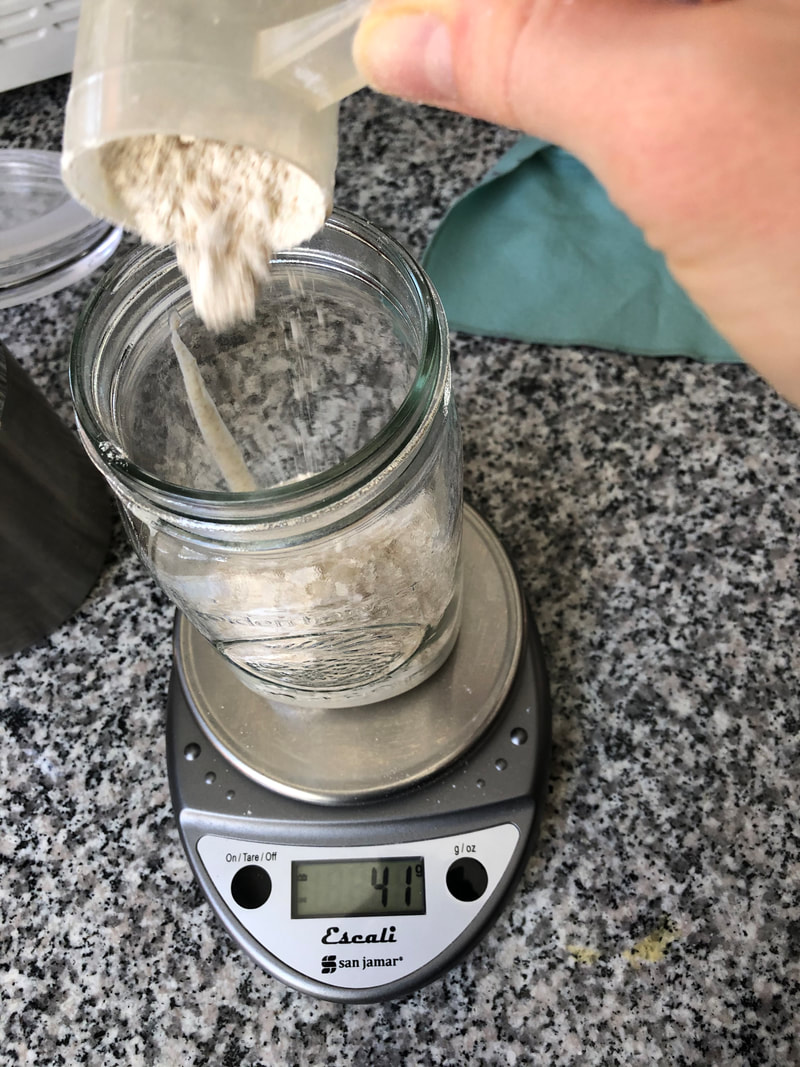Maintaining a Sourdough Starter
vegan, refined sugar-free, nut-free
If you have an active sourdough starter, you are just minutes away from making sourdough scallion pancakes, an hour and a half away from making sourdough crackers, and a few hours away from making a light and flavorful loaf of bread or a fluffy and flavorful pizza crust! Just like my Soft Gruyère, the instructions may seem like a lot, but it takes only minimal hands-on time to maintain a starter. Feed once or twice per day if you want to keep it on your countertop, or feed just once per week if storing in the fridge. You can also freeze it if you want to take a break from making sourdough stuff.
Yield: doubles starter / Active time: 3 minutes / Total time: 12 hours-24 hours
|
Helpful Tools:
|
Directions:
|
*If you have any friends who use sourdough, they would probably be happy to give you a small amount of starter to get you started. You can also purchase a starter like this one. You can start with any weight, so don't worry if you don't have exactly 45 g. The idea is that you want to add an equal weight of flour and water to your starter. **all-purpose or whole wheat work fine. You can also mix in a few grams of rye flour, which helps speed up the fermentation process (just make sure to keep the TOTAL amount of flour the same weight as the water). ***Chlorine found in tap water can kill the active cultures in the starter, so do your best to remove the chlorine with a carbon filter or by allowing the water to sit out overnight. ****The amount of time will vary depending on room temperature. *****Some people use a new jar every time so they can be super accurate with weighing the starter, but you can also memorize the weight of your jar and subtract that from the overall weight or just eyeball the volume to get a good idea of how much flour and water to add. I usually add between 30g and 100g depending on how much starter I appear to be starting with. It's most important that the amount of flour and water you add are exactly the same. |





